Planting heather in the fall in open ground: rules of care and cultivation
Heather is a miniature undersized (ground cover) evergreen shrub that is decorative practically all year round (it blooms in autumn, not to be confused with Erica, blooming in spring). If you plant several varieties of heather at once, then you can create a colored carpet (heather meadow) that will decorate your garden.
Well, let's talk about how to properly plant heather in your garden: where to find it and, most importantly, how to prepare the ground for growing it successfully.
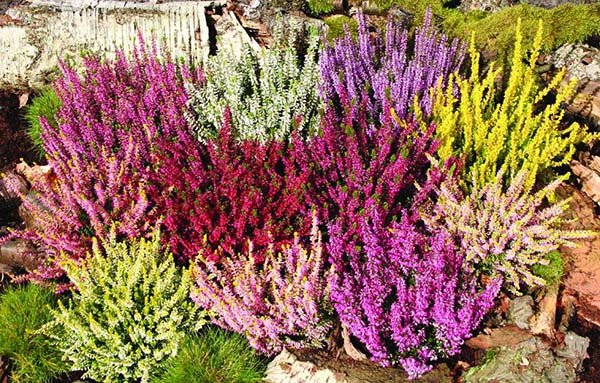
Content
When to plant heather outdoors
Planting dates in autumn
Heathers can be planted in both spring and fall.
Use the main principle of planting plants in containers: when you bought, then you planted.
As for the timing of the autumn planting of heather, it should be carried out a month before the onset of cold weather, so that the plant has time to take root in a new place. So, depending on the region, heathers are planted in the first half of autumn (from the end of August to the first half of October): if you are a resident of the Central strip (Moscow region) - later, in the Urals - earlier, and in the South you can plant even at the end of October.
Can I plant in spring
Of course, heathers can also be planted in spring. Some even believe that spring is the best time to plant all heather crops. In cold regions, for example, in Siberia, it is generally recommended to plant heathers only in spring. The ideal time is April-May.
How to plant heather in open ground: rules for a successful planting
In order for the heather to take root well and begin to actively grow and bloom, you need to create a natural environment for it, in which it is used to living in nature.
Varieties and seedlings
On sale you can find many varieties of heathers, which will differ in both the color of flowers (white, pink, red, purple) and leaves (green, yellow and gray-blue), and the color scheme is as diverse as possible.
The varieties also differ in the shape of the flower (simple, double and in the form of an opened bud).
Where can I buy? In the nearest garden center. As a rule, they start selling them in the month of September, when they bloom (this is precisely why they are most often planted in the fall).
When choosing a specific specimen, be sure to look not only at the appearance of the plant, but also at the state of the earthy coma - it should in no case be overdried (if the plant lacks moisture, this can be determined by the state of the lower leaves: they will be yellow).
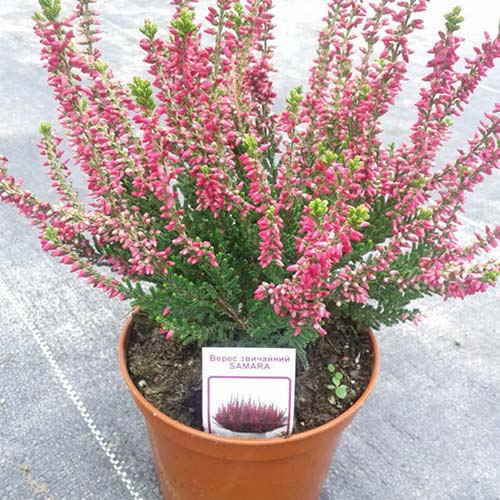
Video: varieties of heathers and the secrets of growing them
Is it possible to dig up heather in the forest and plant in a summer cottage
At the very least, it's worth a try! However, consider a very important nuance: you need to try dig it out with the largest possible clod of earth... The fact is that heather, like other heather and coniferous crops, is in close symbiosis with soil fungi (mycorrhiza)... Accordingly, you need to dig out a plant with a sufficient earthy clod (definitely more than a crown) so that this keep symbiosis.
Place in the garden
You need to plant heathers only in the sun! After all, the plant blooms, but how will it bloom in the shade? Of course, you can plant and in partial shade, but only if in easy.
It will be very great if you find a place in the garden for heather where it will be closed from the midday sun, for example, the crown of a fruit tree.
Heather - excellent honey plant, which will attract bees in huge numbers, so planting it near the house, especially under windows or near the door, is not a good idea.
In general, it is very important that the site was open and sunnybut protected from the northerly winds. For example, you can plant heather under a bush.
Important! Planting heathers in flower beds near (around) pine trees, where there is a lot of pine litter, is a potentially interesting idea, but only coniferous litter will not be enough for the plant, because the acidity of the soil will be insufficient. In any case, you will have to add sour high peat to the planting pit.
In landscape design
Heather will look great in the foreground of the flower bed, near the tracks (to form low curbs), perfect for rockeries and alpine slides.
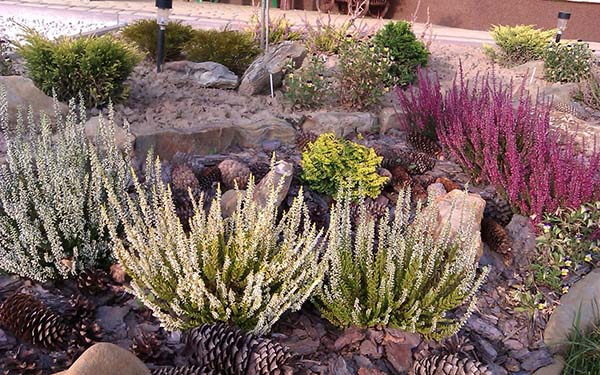
As for the neighborhood, next to the heathers you can plant conifers (thuyu, juniper, pine, spruce), azaleas, rhododendrons, blueberry, cranberries, lingonberries, wild rosemary, gaulteria, andromeda. Shortly speaking, all plantswho also need acidic soil.
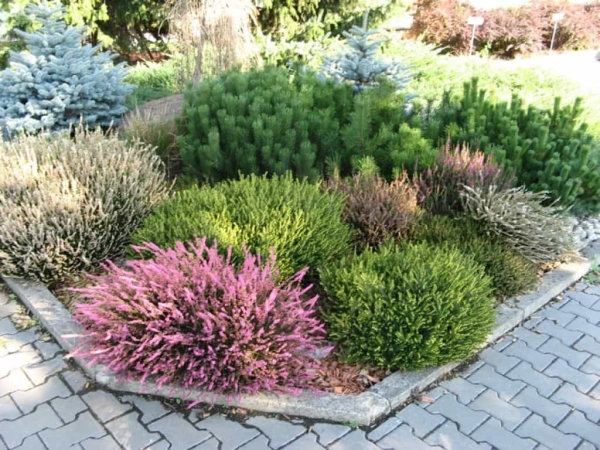
Is it possible to grow houses on the balcony
Heathers are great for planting in balcony boxes or pots, which means that you can enjoy the beauty of this plant in your apartment (on the balcony), even without having a summer cottage.As a rule, in this case, heathers are used as annuals, for example, for the autumn-winter season (until spring), when they bloom.
However! Heather is not the best plant for a windowsill: there it will most likely lack moisture (the air will be too dry due to heating) and the shrub will quickly lose its decorative effect. Of course you can try them spray.
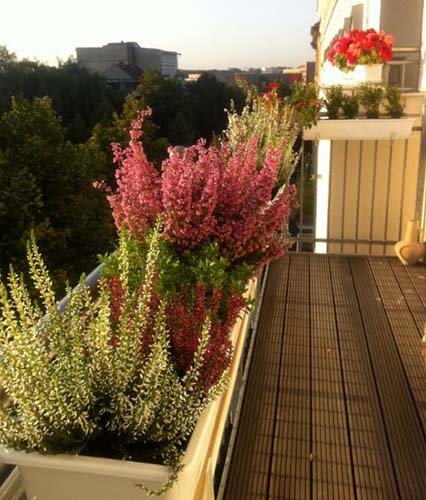
Required soil
Heathers belong to the heather family, which means that they need special conditions for successful cultivation, namely they need acidic soil (pH 3.5-5.5).
Remember! INHeresses should never be planted in ordinary soil (neutral acidity)!
In sandy, sandy loam or loamy soil, heather crops (the same rhododendrons and blueberry) will not grow normally, the more profusely bloom or bear fruit. Most likely, they simply will not survive the winter (dry up and freeze).
In other words, you need fill the planting hole with acidic soil.
- How to make acidic soil for heathers?
Alternatively, you can prepare the soil mixture yourself by taking in equal parts (1 to 1):
- sour high peat;
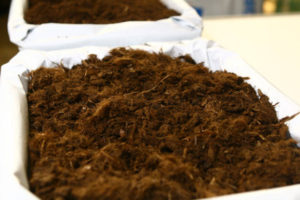
- and coniferous litter.
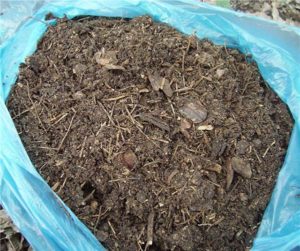
Why do you need forest coniferous litter?
It contains mycorrhiza of the symbiont fungus.
All heather crops develop in close symbiosis (symbiotic relationship) with such a specific type of fungus as ericoid mycorrhiza. Ericoid mycorrhiza helps the plant to absorb nutrients from the soil, and lives she only in acidic soil (in neutral and even more so in alkaline soil it dies)... In other words, an acidic environment is needed not by the heather itself, but by the mycorrhiza, which is located on its roots.
- Where can I get (dig up) sour peat and coniferous litter?
Sour peat can be dug up in a forest swamp (near the coast) or buy it ready-made in a large garden store.
"Boggy high peat".
Coniferous litter - again, collect in the forest (they also say “forest floor«), and you need to collect exactly loose and smelling like mushrooms spruce or pine litter, not dry (Not suitable!).
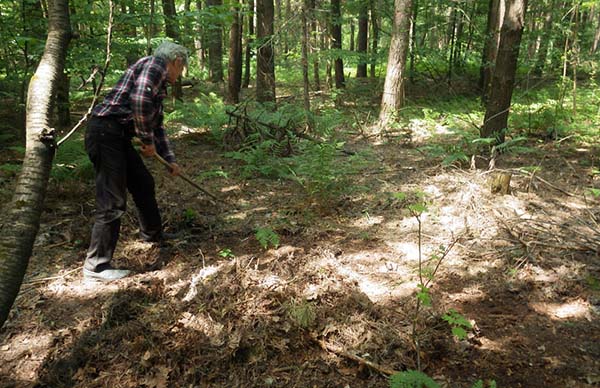
By the way! Now on sale you can find mycorrhiza mushroom in bags.
If you do not want to bother, then you can buy in the garden store ready acidic soil for heathers, azaleas, rhododendrons or blueberry and other wild berries. Of course, it is possible for hydrangeas, but it is less sour.
To fill the planting hole, you need at least 15-25 liters of soil.
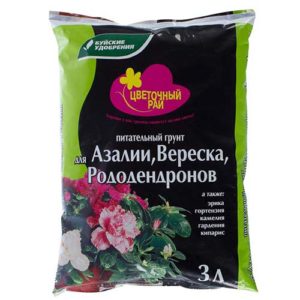
Note! Do not add any classic organic matter (compost, humus), because it alkalizes the soil. Another thing is pine litter (necessarily rotted) or softwood sawdust.
However, garden needles (growing on your site) not good - needed exactly forest litterin which soil fungi live.
Landing pit
So, as we found out, ordinary garden soil is not suitable for heathers, which means that you will need to dig a planting hole and completely remove the garden soil (use it for some other purpose, especially the upper fertile layer), and then cover it with acidic soil.
Because heathers are usually sold in pots, then the size of the planting pit should be 2-3 times larger than the earthen lump of the plant (i.e. pot). In other words, if the height of the pot is 10-15 cm, then you need to dig a planting hole and fill it with acidic soil. 25-40 cm deep.
Important! If the soil on your site is sufficiently clayey, then, in addition to the fact that the pit should be as large as possible, drainage material should also be laid on the bottom.
Landing scheme
As for the distance to plant heathers from each other (after all, it is much more beautiful when several heathers grow nearby), then between the bushes there should be at least 25 centimeters, and preferably 30-40 cm.
Direct landing
Step-by-step instructions for planting heathers in open ground:
- Choose the most suitable location on the site.
- Fill the planting hole (or trench) with acidic soil.
- Make a small indentation for planting a seedling.
- Gently knead the container, and then deftly pull out the seedling along with the earthen clod and place it in the recess.
Many, very not in vain, advise not just to take and put an untouched earthen lump in the planting hole, trying to cross it without damaging the roots, but on the contrary, cut the root ball and spread the roots to the sides... The fact is that the roots of a plant in their natural environment grow in width, and not in depth (as in a pot).
If you are afraid to downright "tear" the roots, then slightly loosen the earthen lump and spread the roots yet highly recommended.
- The root collar of the plant should be at ground level, so either add or remove soil.
In no case should it be possible to deepen the root collar, therefore it is better to initially plant it even above ground level so that the earth settles and the bushes take the correct position.
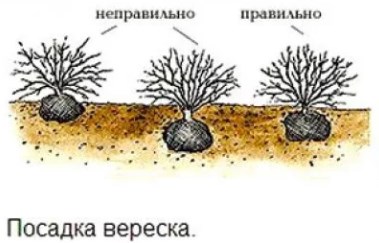
- Fill the remaining space with nutritious soil and then tamp lightly.
- Water abundantly, wait until the loose soil settles, and then add more (if necessary).
- Planting is almost complete, it remains only to mulch the heather with the remaining coniferous litter or pine bark. Mulch will help retain moisture and keep the soil from overheating.
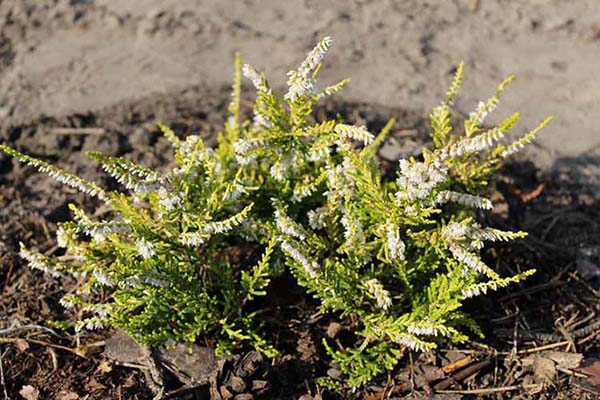
Video: how to plant heather correctly
Outdoor heather care
In order for heather to grow beautifully and bloom profusely in your summer cottage, it needs proper and timely care.
After planting, for successful rooting in a new place, heathers need to be watered regularly (up to the very frost) and be sure to mulch.
Watering
Sour loose peat soil dries up quickly enough, and heather crops love moisture very much (but not stagnant)so you will need to water your heather plant regularly. Especially often it will have to be done in the summer, in the heat.
All heather crops are very respond well to spraying.
Advice! Monitoring soil moisture is just as important as its acidity.
Loosening, weed control and mulching
If you do not want to do loosening, although in the case of sour peat this is not such a frequent event, and weed control, then you need to mulch the heather tree trunk, for example, with the same pine bark or litter. Moreover, thanks to mulch, moisture in the soil will linger longer.
It will be very nice if you mulch the surface of the soil with cones.
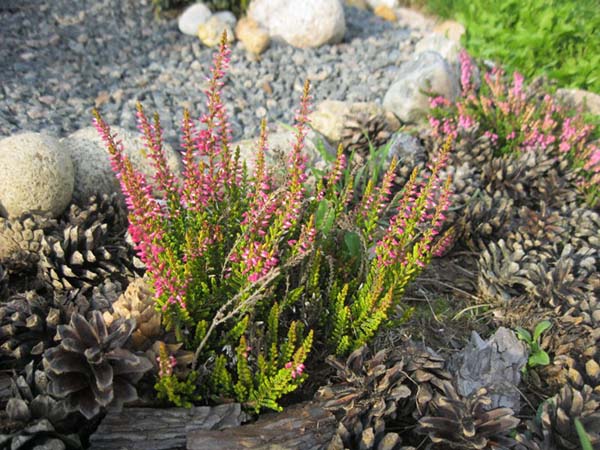
Top dressing and soil acidification
Just planting heather in acidic soil is not enough - you need to maintain the necessary acidity of the soil (acidic environment), periodically adding acidic fertilizers with watering (= acidify the soil).
Again, as with soil, you can purchase special fertilizer for heathers, azaleas, rhododendrons or blueberries.
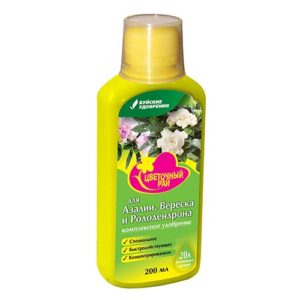
Of course, fertilizer for hydrangeas is also suitable, but in this case you will need a double or even a third dose of fertilizer, because its acidity is not very high, so there is no point in using them.
Also it will not be superfluous periodically add coniferous litter and add sour bog peat.
- When to feed heathers?
You can start feeding from early spring (after the snow melts) and until autumn (according to the instructions on the package). As a rule, acidic liquid dressings are applied in summer.
Important! Top dressing should only be given at temperatures above / below +8 .. + 10 degrees, otherwise the roots of the plant will simply not be able to assimilate food.
Of course, you can try (but better not) use the standard feeding scheme and apply conventional fertilizers: in the spring - nitrogen (ammonium sulfate, ammonium nitrate), but by no means compost or humus, because this is an alkaline fertilizer), and in the summer, at the beginning of autumn, give potassium and phosphorus (potassium sulfate and superphosphate). However, heather does not need very fertile soil - it is much more important that it is acidic, so such additional fertilizing is unnecessary, so that they would not write on the Internet.
However! Ammonium sulfate is an excellent mineral nitric acid fertilizer.
Pruning
Heathers are pruned in the spring, namely, they trim dry peduncles and needles burnt in the early spring period to the green lower part (you can capture it a little).
Don't be afraid to cut the heathers, they bloom on the shoots of the current year!
Autumn care and preparation for winter
Very often, gardeners are faced with the problem that heather crops do not winter in them. The fact is that the plants are simply weakened due to improper planting and care, namely the lack of an acidic environment.
As a rule, there is no point in trying to cover the heathers, because plants are hardy enough. All the problems of their wintering are in improper care, and not in the absence of insulation for the winter.
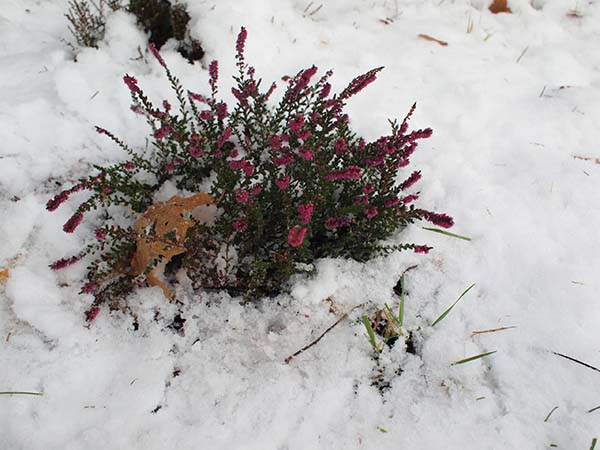
However, some do harbor newly planted heathers for the winter. For this, one twigsso to speak for snow retention (after all, snow is the best natural winter insulation).
It's another matter if in your region no snow... Then better cover, and make a frame shelter (for example, on arcs or put a lattice box), and you can cover it with spunbond on top, but not with a film - there must be air inside.
Important! If in the spring it seems to you that the heather is frozen out, because stands dry (as if “dead), do not rush to throw it away. His needles just burned. Cut it, remove overgrown flower stalks, i.e. do a pruning and see results in a couple of weeks. Most likely, everything will return to normal.
Reproduction methods
Heathers reproduce very well cuttings... It is best to carry out cuttings in the summer, when the buds are just beginning to form. Heathers can also be propagated layering (digging in the side branches).
Transfer
It is better to transplant heathers in autumn (but spring transplantation is also allowed). And after that, be sure to water abundantly, then they will take root well in a new place.
Video: Secrets of Proper Heather Care
Errors when planting and caring for heathers
Not every gardener manages to achieve lush and beautiful heather bushes. They very often grow poorly, dry and eventually die. Usually. this is due to the following reasons:
- They chose the wrong place, namely, it is too shady, while heathers love the sun or light partial shade.
- The planting was done incorrectly - the root collar was buried or positioned too high.
- Most importantly, they were planted in ordinary garden soil, while heather crops will grow well only in acidic soil.
- You rarely water, while heathers are very fond of moisture (but not stagnant water).
- Do not apply acidic dressings (do not acidify the soil), although the acidity of the soil gradually decreases.
Of course, heather is a relatively whimsical and demanding plant, it is not easy to grow it, but it is such a beauty that is worth your efforts.
Remember! Acidic soil is a prerequisite for normal growth, flowering and fruiting of heather crops.
Video: gardeners mistakes when planting heathers + correct planting

